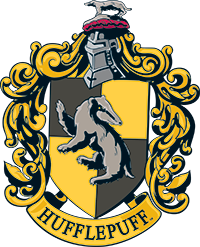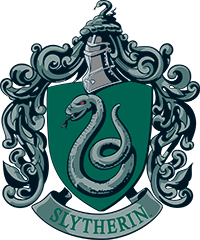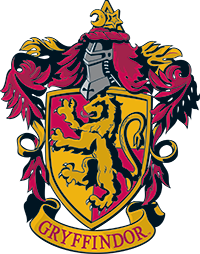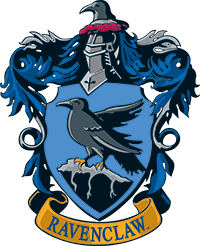House colours
Did you know that each house is loosely connected to one of the four elements? And the house colours represent that? If you did, bravo! Let’s explore a little further…

Hufflepuff yellow and black
For a house full of students that are loyal and unafraid of toil, it makes sense that the element associated with Hufflepuff is earth. Specifically, the yellow is supposed to represent wheat and the black represents soil. And when you think of the grounded and down-to-earth characters who are members of this house – like Professor Sprout and the ever-humble Cedric Diggory – it’s a perfect fit.
Hufflepuff’s house founder, Helga Hufflepuff, was also down-to-earth and was even known for her culinary talents, adding to this house’s homely vibe. Many of her recipes inspired the meals of the Hogwarts kitchens.
Interestingly, the colour yellow has ties to friendship and joy. Typically, you would present someone with a bunch of yellow roses to signify this relationship. In our view, loyalty (one of Hufflepuff’s key traits) and friendship go hand in hand, reinforcing just how well this colour suits this house.
Ravenclaw blue and bronze
As we all know, Ravenclaw is the house known for its wit and love of learning – making it the home of the dreamers, the visionaries and those with their heads in the clouds. We doubt it’ll come as a surprise, then, to know that Ravenclaw’s element is air. Once again, this is reflected in its colours with J.K. Rowling confirming that the blue was for the sky and bronze for eagle feathers.
Furthermore, the colour blue is often associated with wisdom and studies have shown that being surrounded by this colour can even stimulate people’s creativity and productivity. With a house known to turn out inventors and great thinkers… need we say more?

Slytherin green and silver
The element that Slytherin is connected to is water which is why its house colours are green and silver. Knowing that, it seems fitting that their common room is found below the lake at Hogwarts.
However, the colour green has further meaning in the wizarding world, as it also represents Dark magic, such as the emerald stars that compose Voldemort’s Dark Mark Now, we must stress that Dark magic isn’t the only thing this colour denotes – especially when there are plenty of Slytherins who aren’t tempted down that Dark road. It is also a colour that has long represented the supernatural in the UK. In the wizarding world, it is often used by witches and wizards (alongside purple) to reveal their magical status. Much like this house, the colour green is multifaceted with a complex reputation.
Gryffindor red and gold
Finally, we have Gryffindor, which is represented by the colours red and gold. You can probably make an educated guess as to which element is tied to this house… fire! With a house full of passionate and bold witches and wizards, an element as vivid as fire suits it well… especially with the number of flame haired Weasley’s amongst its ranks. Outside of the wizarding world, the colour red is often associated with confidence and energy, only compounding this further.
Fun fact, did you know that certain Gryffindor’s name means red? Yep! Hagrid’s first name, Rubeus, means red too! It comes from the Latin ‘rubeo’ which means ‘red’ or ‘ruddy’. He’s a Gryffindor through and through.
House animals
If you have looked at the Hogwarts crest, you’ll have spotted four animals. Each of these animals symbolises a different house. But what could they mean?

The Gryffindor lion
Often referred to as ‘the king of the jungle’, Gryffindor is represented by a lion. As the house where ‘dwell the brave at heart’, it makes sense for such a noble creature to represent it… Especially as lions have a reputation for being daring and brave. There are plenty of examples in popular culture that reinforce this – from children’s books to The Wizard of Oz, where one lion realised he was braver than he knew… just like one of our favourite members of this house, Neville Longbottom!
The Slytherin serpent
Next, we have the slithering serpent of Slytherin. A very apt symbol for the house founded by a man who could not only talk to snakes but kept a giant one in a secret chamber beneath the school. Outside of the wizarding world, the snake often represents cunning – a trait which is very much part of the Slytherin identity. For example, as part of the Chinese zodiac, those born in the year of the snake are known to be calculating, clever and curious too.

The Ravenclaw eagle
That’s right! The animal that represents Ravenclaw in the books is not a raven but a majestic eagle. When you think about how this house is tied to the element air, a bird that soars through the sky is symbolically appropriate. Outside of the wizarding world, the eagle has ties to Norse mythology. It is closely linked to the god Odin and represents wisdom and light. Again, a fitting symbol for a house whose founder’s motto was ‘wit beyond measure is man’s greatest treasure’.
The Hufflepuff Badger
Last but by no means least, we have Hufflepuff’s animal – the badger. Considering that a badger is an animal which spends a lot of time underground and amongst the earth, it suits the house whose element is also earth. In fact, the Hufflepuff common room is reminiscent of a badger sett. This cosy room is partially underground, with low-ceilings and round windows that are level with the earth, giving Hufflepuff students an excellent view of rolling grass and dandelions.
Want to celebrate your house pride? Visit our official house pride page to play quizzes (including our EPIC Quiz Championship!) take part in activities or simply learn more about what makes your house so special.

